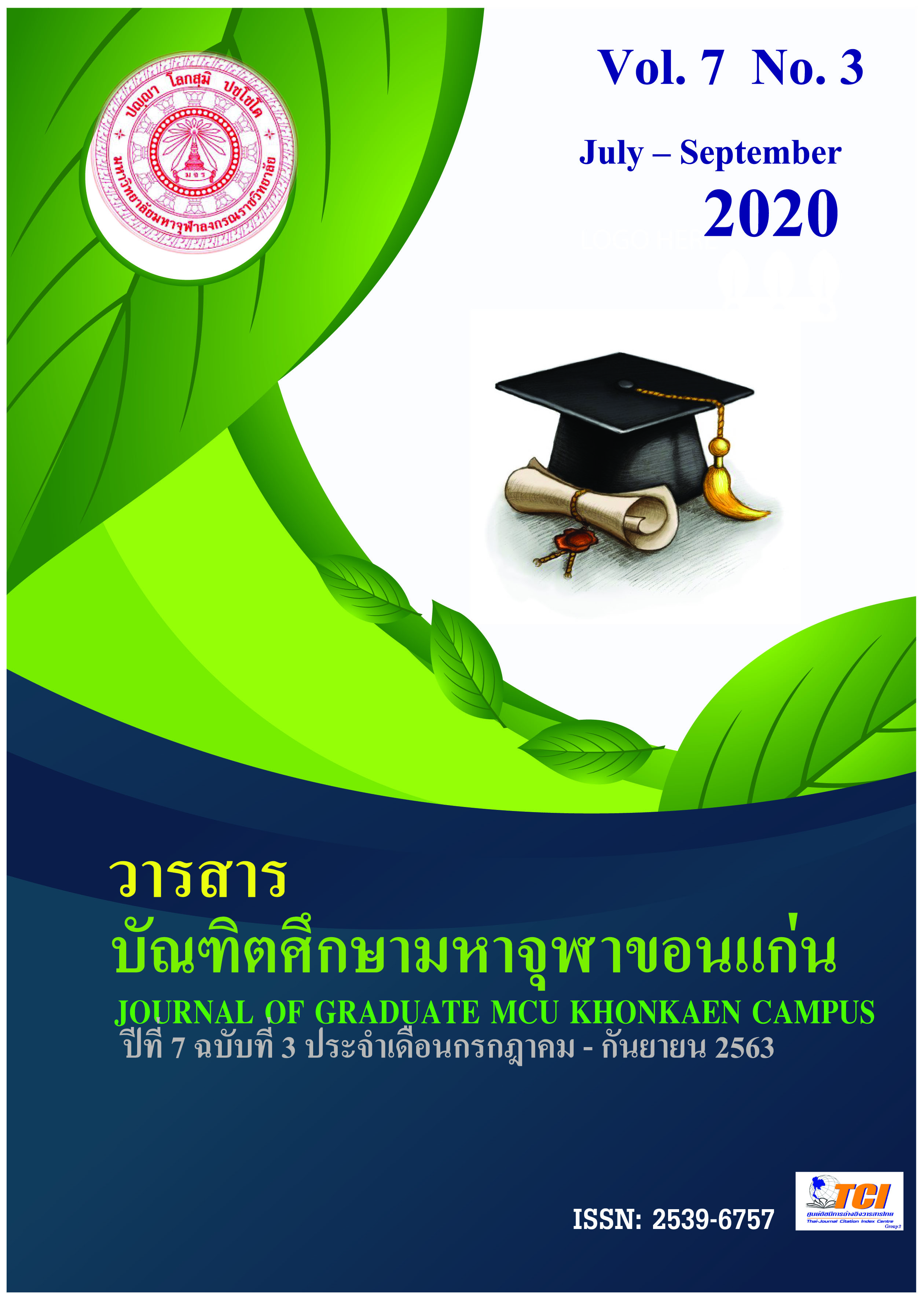HUMAN RESOURCE MANAGEMENT TO MOVE THE ECONOMY FOR THAILAND 4.0 ERA
Main Article Content
Abstract
Abstact
The 21st century economy, organizations need to develop for keep up with the changing and fierce competition of the business world. The government nurses to move the national economy with the Thailand 4.0 policy, which they are an economic policy moving by creativity, innovation and high value services. Personal with little skills need to adapt to work that requires knowledge. expertise and more advanced skills because human resources were the most valuable resource of an organization and they were an important factor in making a business successful in operations or losing to its competitors. Human resource management when the economic context changes, so that the organization can grow in a new context with strength and efficiency. Therefore, the idea must be used to drive the economy to increase production capacity in line with the needs of the market and society, including 1) Attracting high-potential employees to the event 2) Promoting and supporting the use of technology in work processes 3) Organizational human resource development 4) Caring for and paying attention to and maintaining personnel 5) Creating employee engagement 6) Change management by changing work methods and 7) bringing human resource management into the main line of work.
Keyword
Human Resource Management, Thailand 4.0 Era
Article Details
References
กองบริหารงานวิจัยและประกันคุณภาพการศึกษา. (2559). พิมพ์เขียว Thailand 4.0 โมเดลขับเคลื่อนประเทศไทยสู่ความมั่งคั่งมั่นคงและยั่งยืน. กรุงเทพมหานคร.
จิตติมา อัครธิติพงศ์. (2556). การพัฒนาทรัพยากรมนุษย์. พระนครศรีอยุธยา : คณะวิทยาการจัดการ มหาวิทยาลัยราชภัฏพระนครศรีอยุธยา.
ฉัตรนรินทร์ เมธีกุล. (2559). การพัฒนาทรัพยากรมนนุษย์ในยุค. THAILAND 4.0. กรุงเทพฯ : สำนักเสริมศึกษาและบริการสังคม มหาวิทยาลัยธรรมศาสตร์.
นพพงษ์ บุญจิตราคุล. (2551). หลักการและทฤษฎีการบริหารการศึกษา. กรุงเทพฯ: เทียมฝ่า.
พยอม วงศ์สารศรี (2545). การบริหารทรัพยากรมนุษย์. กรุงเทพฯ : สำนักพิมพ์สุภา.
ภัทรนันท สุรชาตรี. (2562). การบริหารทรัพยากรมนุษย์ตามหลักปรัชญาเศรษฐกิจพอเพียงเพื่อก้าวสู่ประเทศไทย 4.0 วารสารวิจัยราชภัฏกรุงเก่า. 3(1), 99-108.
ยุกตนันท์ หวานฉ่ำ. (2555). การบริหารสถานศึกษากับประสิทธิผลของโรงเรียนในอำเภอคลองหลวง สังกัดสำนักงานเขตพื้นที่การศึกษาประถมศึกษาปทุมธานี เขต 1. วิทยานิพนธ์ศึกษาศาสตรมหาบัณฑิต. มหาวิทยาลัยเทคโนโลยีราชมงคลธัญบุรี.
ลาวัลย์ เกติมา. (2561). การขับเคลื่อนกลยุทธ์การบริหารทรัพยากรบุคคลของโรงเรียนพบพระวิทยาคม สังกัดสำนักงานเขตพื้นที่การศึกษามัธยมศึกษา เขต 8. วารสารการศึกษาศาสตร์. 19(1) 174-177.
วรนาถ แสงมณี. (2547). การบริหารทรัพยากรมนุษย์. กรุงเทพฯ : ห้างหุ้นส่วนจำกัด ประสิทธิภัณฑ์แอนด์ปริ้นติ้ง.
วิลาวรรณ รพีพิศาล. (2554). ความรู้พื้นฐานในการบริหารทรัพยากรมนุษย์. กรุงเทพฯ : โรงพิมพ์วิจิตรหัตถกร.
สุวิทย์ เมษินทรีย์. (2559). ภาวะผู้นำ. กรุงเทพฯ : สำนักรัฐมนตรี.
Dessler, G. (1997). Human Resource Management. Upper Saddle River. New Jersey : Prentice-Hall.
Caldwell, R. (2004). Rhetoric, facts and self-fulfilling prophecies : Exploring practitioner's perceptions of progress in implementing HRM. Industrial Relations Journal. 35(3), 196-215.
Noe, R. A., Hollenbeck, J, R., Gerhart, B. & Wright, P. M. (2012). Human resourcemanagement : Gaining a competitive advantage. 8th ed., New York : McGraw-Hill/ Irwin.

